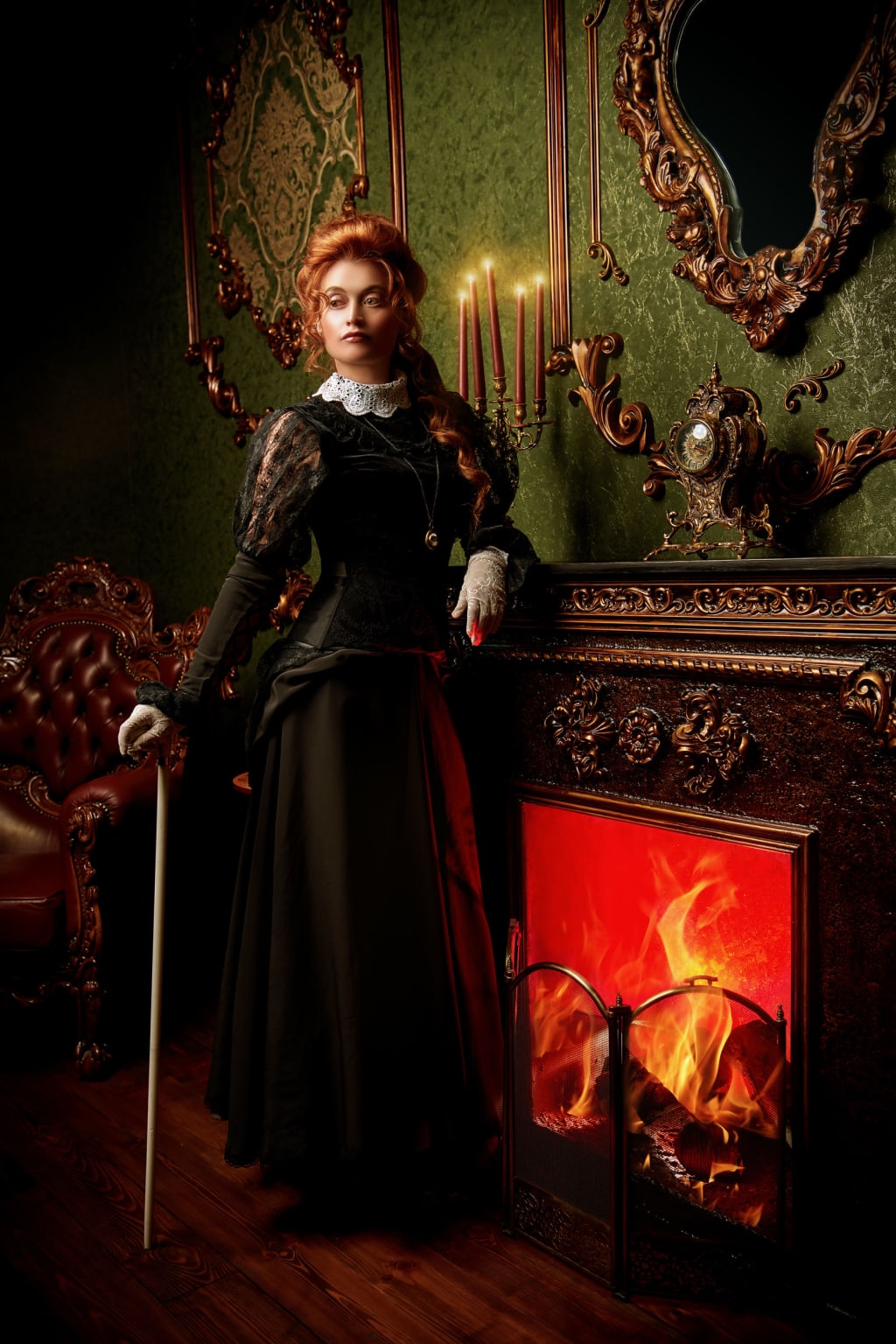The Roll of a Woman
a look at the rolls of women through the decades

This world is changing all of the time. And as it changes so does our roll as as a woman. As you can tell through out history , change is very important. If we are not changing we are going backwards , and the point is always to move forward.
The Victorian Era was during the years 1837- 19:01. The roll women had back then really depended upon their social position. If you where a women of nobility, you where upper class and your family was wealthy. A woman of this social status lived a life of luxury. She spent most of her time attending different parties and social gatherings. She had many servants to look after her. The more limited her responsibilities where the wealthier she was. So the roll she played was to instruct her servants on what they needed to be doing. These woman most the time where highly educated, and tried different jobs such as school mistress or governess. Her main goal however was to keep the husband happy and raise the children. For the most part their lives did not have much outside interest . Women from this time period had no choice, but to accept the roll society decided for them. Woman of the middle class belonged to the domestic sphere. Their roll was to provide their husbands with a clean house , put food on the table, and raise their children.Often they had the responsibility of educating their children. Seems like easy and simple rolls doesn't it , but I wonder at times was it really. If you lived during this time as a woman , you just did what society had in mine for you, and that's just about it. If you where considered lower class back then you where screwed. Keep in mind there was no bettering yourself back then. You kept your social standing for life. Lower class women seldom married. And held jobs in prostitution and as labors. They suffered extreme poverty.
By the time the 1890's came around the Wild West was becoming a thing of the past, and industrial was in full swing . Darwinsion was on the rise. It was the concept that we could function in society, but we didn't owe society anything. During that time you could better yourself if you so chose to. The most important roll of a woman at this time was still motherhood and marriage. Although her stand in the community was not based on when she started a family. If you where a married woman back then your life was very limited. A wife was expected to care for her house and her husband. And that was pretty much all her life was about day in and day out. I am thankful today that, although we are still expected to do those things, we can also have a productive life. It is amazing how different things are today from way back then. Back then women wanted change. Some remained unmarried to take a step towards independence. Upper and middle class women could afford to continue there educations. Mostly this what not encouraged by their families. No matter what class you where considered to be in you, where only going to get the jobs that where " suitable for the fairer sex."
Then along came the 1920's . It is during this period women where given the right to vote. The woman's role in the workforce began changing because of World War One. The biggest change to the 1920's was the Flapper. A Flapper was a young women with a short "bob" hair cut. They where known to have a cigarette in their mouth and a cup full of gin. They danced to jazz in outfits that fancied the men. They where defined by how they dressed . Short shirts and dropped waist, or no waist at all. Their attire also included straight sleeveless shirts. This look was created by Coco Chanel in 1923, a french designer. But it wasn't only the way they dressed , it was their attitude. They where young, fast moving ,and fast talking. They took company with different men. However they did not want the reputation of kissing to many men, out of fear they would never be married. Of course we have to bring up Zelda Fitzegerald ,one of the most famous flappers. Until she married writer F. Scott Fitzegerald , she kissed many men or so they say. After the two married they lived the roaring 20's lifestyle, but by the end of the decade they where driven apart. Part because of F. Scott Fitzegerald's drinking, and part because of Zela Fitzegerald's mental illness. She had a mental breakdown, and never left mental hospitals again. So we saw the change in the workforce in the 20's . Due to the Flapper's we say a new attitude and new style of dress. Other changes that came along where that birth control was becoming more available, and the size of families became smaller. Woman did enjoy new freedom at this time, but the main goal was still marriage and children. The stalk market crash of 1929 marked the end to the roaring 20's. By 1930 woman where back to wearing more traditional clothing.
By the time the 1950's got here women started caring less about what society wanted. Advertisement in magazine and TV shows defined the roll of mothers. All of us have seen a picture of a woman of this decade. She is fully dressed in high heels and a dress, with her hair fixed perfectly . She is wearing a giant smile across her face and doing some type of household chore. Shows like Ozzie and Harriett where an example of how a home should be. Well society may have thought women fit this roll but few, assumed the roll completely. Because of modern appliances woman could have outside interest. As far as college went for women in the 1950's the number of girls dropped. Most of the girls that where in college wound up leaving , to get married. And of the girls that actually stayed in school few got jobs after they finished. The women of this time wanted a quiet life at home with their husbands. Having the job of tending to the house and raising children. As more and more women joined the workforce social commentaries accused them of actually endangering families. Because the women where not there for there children and husbands, the family unite would be a thing of history. Women did progress in the 1950's they gained new jobs and found their place in society.
The turn of the decade , 1960's was an eventful time in history for women. Women where expected to maintain beauty and elegance, while maintaining a well ran home for their husband and children. Woman where portrayed as happy homemakers , nurses and teachers. And if you don't know anything about this era, it is misleading. A person could almost think this is what the American woman were doing at this time. In fact the 1960's the Women's Liberation Act was passed. Many women where running around burning their bras and shouting for sweet freedom. By 1963 the equal pay act was passed. Women where beginning to stand up for their rights, and it was working for them. As the roll of women began to evolve in the 1960's the media began reflecting that.
Moving to the more modern times of the 1990's. Well the 1990's was a different decade for woman. Some say women where on top of there game. We took more and more of an active roll in the workforce. The age of getting married went from about 22 to 25. The first woman was appointed US Attorney General. In 1995 women reported earning half or more of the households income. By women postponing marriage they where liberated. They then had economic power and made their way into male dominate careers. During this time Sally Ride , traveled to space. Geraldine Fernaro secured the vise president nomination. All things women had never done before. It was also a decade filled with a lot of sexism. It seems the more power women got, the more that was taken from them. The promise of equality for women proved to be sort of a hoax. As more and more sexual harassment happened at the work place. It is said that the 1990's did not advance women, but was actually marked by efforts to subordinate them.
In today's world I say that women have it better than they ever had. We can get just about any job we want . The role of being a care taker at home is shared a lot of the time because, both parents have to work. That being said you have to keep in mind that women are natural care takers. It is in our instinct to take on that role. Women who work often say they have two jobs , one outside the home, and one inside the home. Women are still the ones,who will stay at home with the sick child We still cook most of the meals, and do most of the cleaning. Today we see a mix of a traditional roll and a modern roll. That can add up to actually more work. You have to also consider how much families have changed. There are single fathers and single mothers, due to divorce , something that was uncommon 5o or so years ago. There are a lot of things that make this modern time hard to compare to early American history. But we continue to make progress and move forward. Personally I am thankful for the opportunities of modern society.
About the Creator
Adriane Kirby
Living the dream here in Texas.






Comments
There are no comments for this story
Be the first to respond and start the conversation.